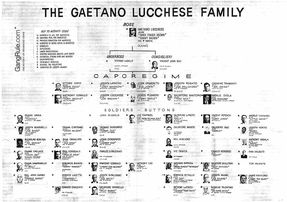In Entertaining Crime: Review, written by Gray Cavender and Mark Fishman, radio crime dramas became popular in the 1930s with Homicide Squad, Calling all Cars, and Treasury Agent as some of the shows produced and was the introduction into "true crime" stories. Following the 1930s, the film noir era of the 1940s causes popularity of crime films to skyrocket. Directors in the 1940s began to find realism in their movies by adapting "police procedurals" into suspenseful scripts and using actual crimes for their storyline. The 1950s were seen as the beginning of radio crime shows transitioning into television, it was slow but steadily gaining popularity. One popular show from this era was Alfred Hitchcock Presents (1955-1965) which was a series of unrelated stories of crime, horror, and drama. Another show, Dragnet, was ranked number 4 in the tv ratings in 1952 and gained over 9.5 million viewers in a time where there were only 20 million homes that owned a tv. The 1970s were the time when crime shows like Ironside, Hawaii Five-0, The F.B.I., Mod Squad, Adam 12, Mannix, and more were taking over television and sending ratings for the broadcasters through the roof.
In Crime and Passion: Journalism for the Masses?, William Davie makes the connection that when American's endorsed a crime control agenda in the 1980s, crime television shows became more concerned with drugs, threats to family stability, and domestic abuse. Shows like America's Most Wanted, Cops, and Unsolved Mysteries became hugely popular. According to the Encyclopedia for Popular Culture, when the show Cops was created in 1989, it established a new form of reality television by using footage filmed by handheld camcorders of police officers pursuing criminals. Entertaining Crime: Review presented data that the in the show Cops 84% of the crimes shown were violent, where 16% were property offences. This information is almost completely opposite to the real crime data from the Uniform Crime Reports (UCR). The reason for this being that the show does not produce all crimes recorded, and in order to keep ratings high and entertain the audience, they choose to show the most interesting cases, which happen to be involving violence. This information shown by television shows gives the public a false sense of the amount and types of crime that may actually be happening in their city, causing panic among some citizens concerned with public safety.
In the 1990s, forensic science was introduced into television to maintain popularity of the crime genre and the extremely popular show Law and Order, which still runs as the longest running tv drama in the United States, was made. In 1986, DNA was used to solve a crime and exonerate an innocent man for the first time and shortly following in 1987, DNA profiling was introduced. Appeal of the Crime Genre found that a popular show Prime Suspect, which was released in 1991, relied on the new techniques of forensic evidence and moved the genre of crime shows further into the trend of realism. It was not until 1994 when the National DNA Database was enacted, allowing criminal DNA to be accessible to law enforcement around the country and making the capture of criminals much easier. The show Forensic Files aired in 1996, shortly after the use of DNA became a major aspect of crime solving. The show has a very similar concept to the show Prime Suspect of presenting a crime, then through the use of step-by-step forensic evidence, showed the viewers how they solved the crime. The focus on the science of detection work gave influence to shows like CSI and NCIS, which are still popular today. In 1999, Crimewatch and Law and Order: Special Victims Unit were created. Around this time, it seemed like the crimes the audiences wanted to see where more disturbing to the public. Law and Order: Special Victims Unit for example is dedicated towards crimes committed against women and children and they range from rape, sexual assault, abuse, and sometimes in the show murder and child pornography. This show became extremely popular and remains popular today.
Criminals in crime shows are almost always present as satanists, drug dealers, or cold-blooded murderers, whereas victims are portrayed as respectable, attractive, and innocent. Show creators do this to reinforce the idea that criminals are not like us, or to allow the viewer to relate to the victim and add to their sense of fear. This fear that the show causes is often minimized by writers almost always ending the episode by the detectives solving the case. Encyclopedia of Popular Culture says that "Resolution of events is preferred over unsolved crimes or escaped or unknown criminals, and reality television attempts to provide viewing audiences with this closure.". This explains why 61.5% of all crimes portrayed in crime shows are depicted as solved, whereas F.B.I. reports prove this wrong with an overall 18% arrest rate. The point of the more gruesome crimes in television were to make the public believe: Crime is rampant, violent and obvious to spot; criminals are villains; and the police and jails are America's best line of defense to decent society.
This still leaves the question as to why exactly crime shows are so popular in television. Crime and passion says, "Television Crime Shows ... have flourished, in part, because crime re-enactments occur within an identifiable social context.", allowing audiences the ability to relate to the characters or stories in the shows or imagine the possibility of this crime happening to them as something much more realistic than before. Another idea is that the introduction of forensic evidence use in shows appealed to viewers intellect and triggers the audience's natural impulse to figure things out. Oxford Handbooks says, "Others note that it is not so much the solution to the puzzle as the pleasure of observing the detective work through the investigation that makes the crime genre so popular. ... and the crime genre and offer a story of how an individual, acting alone or with others, can try to get at the truth - try to produce justice."
An article on Time, Why We are Drawn to True Crime Shows, explains Americas fascination on shows that focus on bizarre, disturbing incidents of murder, specifically serial killers like: Jeffery Dahmer, John Wayne Gacy, Richard Ramirez, or David Berkowitz. This is an extreme to the television crime phenomenon, but the basic principles apply to all crime shows. Scott Bonn, a criminology professor at Drew University, says, "The actions of a serial killer may be horrible to behold but much of the public simply cannot look away due to the spectacle." Viewers also may receive a jolt of adrenaline from watching terrible deeds happen, which causes a surge in happiness and can potentially become addictive. A common universal theme he talks about is that, "As a source of popular culture entertainment, it allows us to experience fear and terror in a controlled environment where the threat is exciting but not real."
Crime shows also prove to be valuable to broadcasters in many different ways. One reason is that the cost it takes to produce crime shows in drastically smaller than some other shows on television. Another reason is that there is no temporal references or continuing storyline throughout each episode, making it easy to play re-runs frequently and results in the majority of what makes profit. These shows also have the ability to fill a station owner's need to provide their audience with public service programming, which is a requirement to maintain a Federal Communications Commission (FCC) License. For these reasons, Investigation discovery and channels like it, broadcast shows and documentaries solely based on crime, investigations, murder, and drama.
1. http://web.a.ebscohost.com/src_ic/pdfviewer/pdfviewer?vid=7&sid=174dc421-2e68-49de-836e-24f01a3eeb7e%40sessionmgr4008&hid=4112














